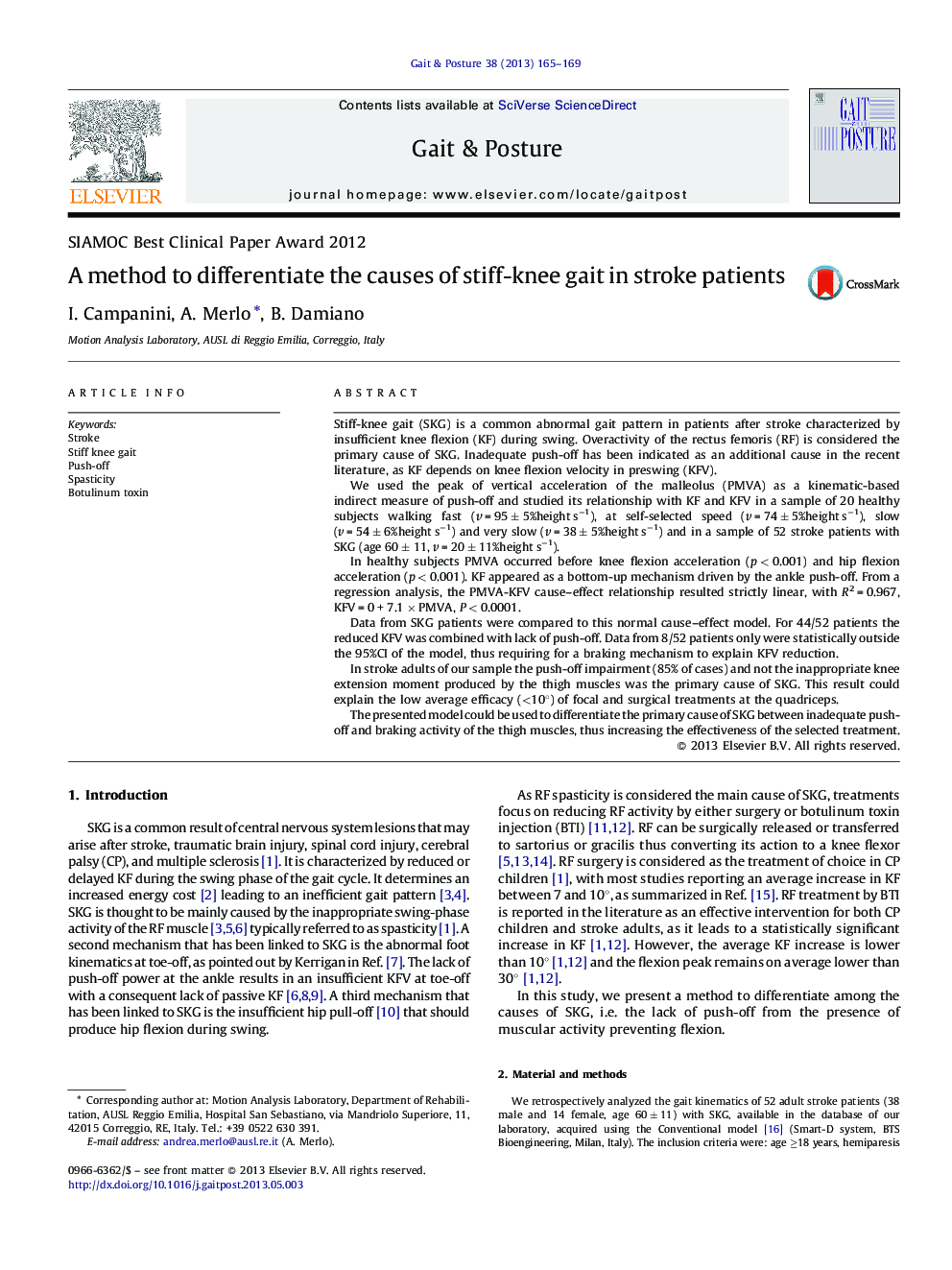| Article ID | Journal | Published Year | Pages | File Type |
|---|---|---|---|---|
| 6207312 | Gait & Posture | 2013 | 5 Pages |
Stiff-knee gait (SKG) is a common abnormal gait pattern in patients after stroke characterized by insufficient knee flexion (KF) during swing. Overactivity of the rectus femoris (RF) is considered the primary cause of SKG. Inadequate push-off has been indicated as an additional cause in the recent literature, as KF depends on knee flexion velocity in preswing (KFV).We used the peak of vertical acceleration of the malleolus (PMVA) as a kinematic-based indirect measure of push-off and studied its relationship with KF and KFV in a sample of 20 healthy subjects walking fast (v = 95 ± 5%height sâ1), at self-selected speed (v = 74 ± 5%height sâ1), slow (v = 54 ± 6%height sâ1) and very slow (v = 38 ± 5%height sâ1) and in a sample of 52 stroke patients with SKG (age 60 ± 11, v = 20 ± 11%height sâ1).In healthy subjects PMVA occurred before knee flexion acceleration (p < 0.001) and hip flexion acceleration (p < 0.001). KF appeared as a bottom-up mechanism driven by the ankle push-off. From a regression analysis, the PMVA-KFV cause-effect relationship resulted strictly linear, with R2 = 0.967, KFV = 0 + 7.1 Ã PMVA, P < 0.0001.Data from SKG patients were compared to this normal cause-effect model. For 44/52 patients the reduced KFV was combined with lack of push-off. Data from 8/52 patients only were statistically outside the 95%CI of the model, thus requiring for a braking mechanism to explain KFV reduction.In stroke adults of our sample the push-off impairment (85% of cases) and not the inappropriate knee extension moment produced by the thigh muscles was the primary cause of SKG. This result could explain the low average efficacy (<10°) of focal and surgical treatments at the quadriceps.The presented model could be used to differentiate the primary cause of SKG between inadequate push-off and braking activity of the thigh muscles, thus increasing the effectiveness of the selected treatment.
